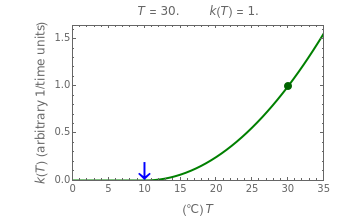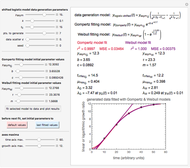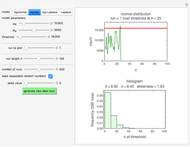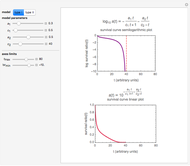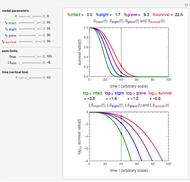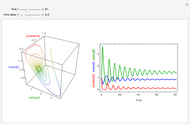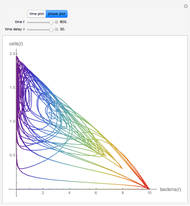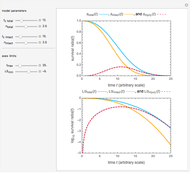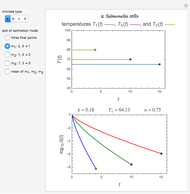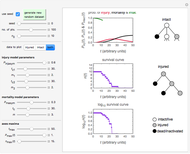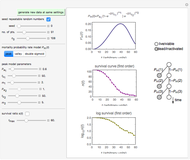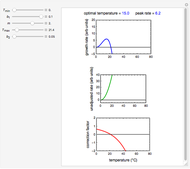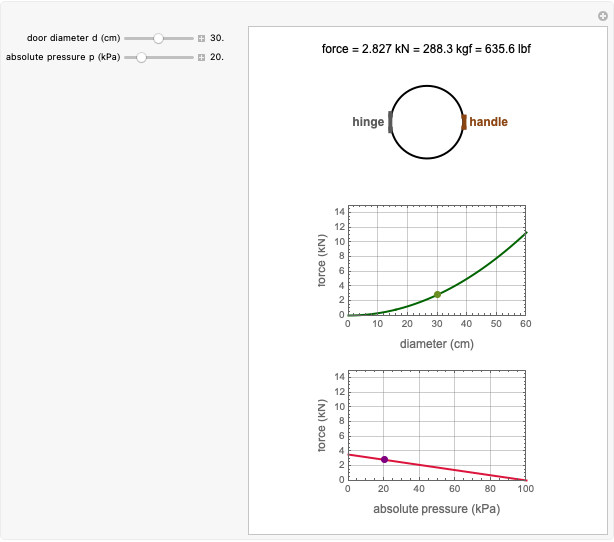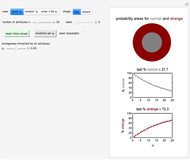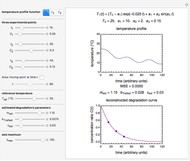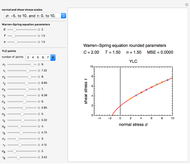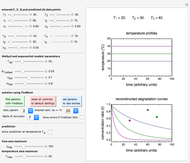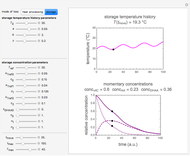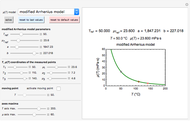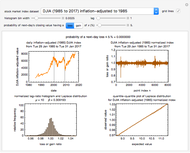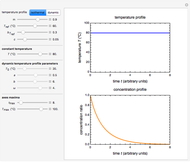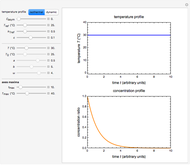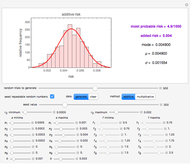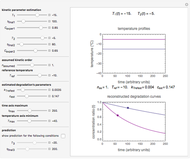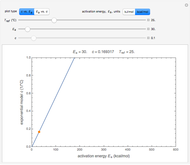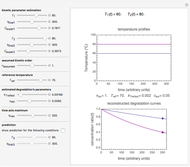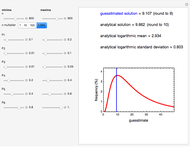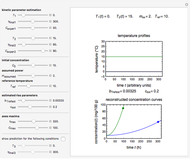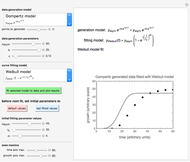Square Root Model for Rates of Microbial Growth or Inactivation

Requires a Wolfram Notebook System
Interact on desktop, mobile and cloud with the free Wolfram Player or other Wolfram Language products.
Microbial growth or inactivation starts at a certain characteristic temperature, which is incorporated into temperature-dependent models for their rates. Ratkowski’s model, known as the "square root model" makes use of a minimum temperature. This model, in its original and modified forms, has been successful in describing the increase of a growth rate parameter in a large variety of microorganisms. This Demonstration provides graphical representations of these models’ properties near the onset of microbial growth or thermal inactivation, in which an inactivation rate parameter replaces the growth rate parameter.
Contributed by: Mark D. Normand and Micha Peleg (December 2013)
Open content licensed under CC BY-NC-SA
Snapshots
Details
Snapshot 1: growth rate parameter of a psychrophilic organism
Snapshot 2: growth rate parameter of a mesophilic organism
Snapshot 3: growth rate parameter of a thermophilic organism
Snapshot 4: inactivation rate parameter of a vegetative bacterial cell
Snapshot 5: inactivation rate parameter of a heat resistant bacterial endospore
Snapshot 6: inactivation rate parameter of a heat resistant bacterial endospore where 
Ratkowski’s original model was written in the form  , where
, where  is the growth rate parameter (usually the isothermal growth curve’s slope at its inflection point),
is the growth rate parameter (usually the isothermal growth curve’s slope at its inflection point),  is the temperature, and
is the temperature, and  is the temperature below which growth ceases [1, 2]. The model can also be written in the general form: if
is the temperature below which growth ceases [1, 2]. The model can also be written in the general form: if  , 0., else
, 0., else  , where
, where  can but need not always be equal to 2 [2, 3].
can but need not always be equal to 2 [2, 3].
In principle, the model can also be used for thermal inactivation, where  is the inactivation rate parameter and
is the inactivation rate parameter and  is a temperature marking the onset of lethality [4].
is a temperature marking the onset of lethality [4].
This Demonstration provides a graphical representation of Ratkowski’s model in its original and expanded versions in the region around  , that is, before growth is turned into inactivation or vice versa. Choose between pure growth and inactivation with the setter bar. You can use sliders to vary temperature in
, that is, before growth is turned into inactivation or vice versa. Choose between pure growth and inactivation with the setter bar. You can use sliders to vary temperature in  , and the magnitudes of
, and the magnitudes of  ,
,  , and
, and  . The plot of the corresponding
. The plot of the corresponding  versus
versus  relationship has a blue arrow marking
relationship has a blue arrow marking  and a moving point on the curve. The numerical coordinates of the movable point, which are the values of
and a moving point on the curve. The numerical coordinates of the movable point, which are the values of  and corresponding
and corresponding  , are displayed above the plot.
, are displayed above the plot.
When  , the model yields
, the model yields  versus
versus  relationships that are reminiscent of those produced by the log-logistic model.
relationships that are reminiscent of those produced by the log-logistic model.
The purpose of this Demonstration is only to illustrate the Ratkowski model and its modifications, not to match any particular organism or process. Therefore, not all parameter combinations allowed by the controls represent realistic growth or inactivation scenarios.
References
[1] D. A. Ratkowski, J. Olley, T. A. McMeekin, and A. Ball, "Relationship between Temperature and Growth Rate of Bacterial Cultures," Journal of Bacteriology, 149(1), 1982 pp. 1–5.
[2] T. Ross, "Bĕlehrádek-Type Models," Journal of Industrial Microbiology and Biotechnology, 12(3–5), 1993 pp. 180–189. doi:10.1007/BF01584188.
[3] L. Huang, C.-A. Hwang, and J. Phillips, "Evaluating the Effect of Temperature on Microbial Growth Rate—The Ratkowski and a Bĕlehrádek-Type Models," Journal of Food Science, 76(8), 2011 pp. M547–M557. doi:10.1111/j.1750-3841.2011.02345.x.
[4] M. M. Gil, T. R. S. Brandão, and C. L. M. Silva, "A Modified Gompertz Model to Predict Microbial Inactivation under Time-Varying Temperature Conditions," Journal of Food Engineering, 76(1), 2006 pp. 89–94. doi:10.1016/j.jfoodeng.2005.05.017.
Permanent Citation

